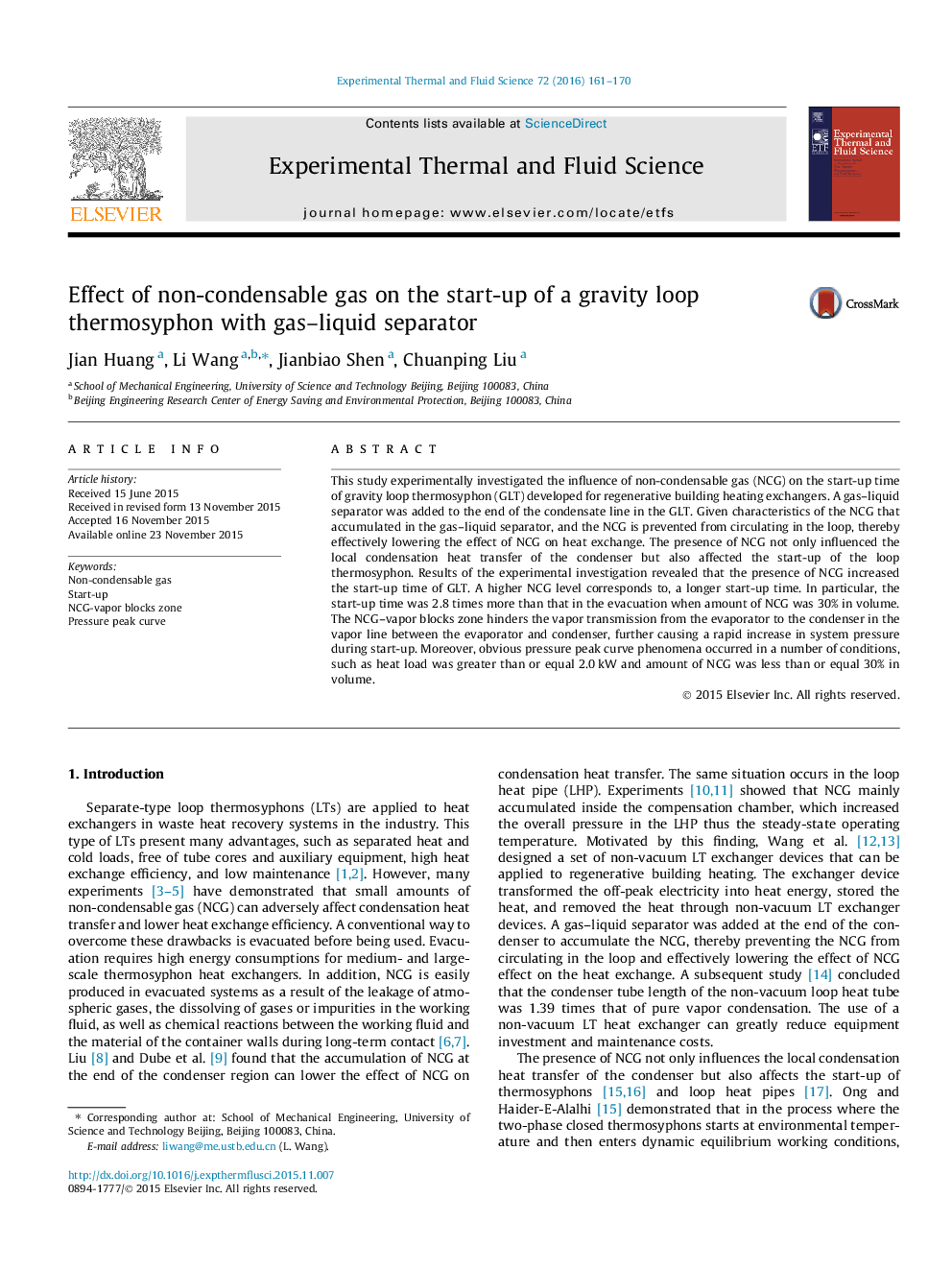| کد مقاله | کد نشریه | سال انتشار | مقاله انگلیسی | نسخه تمام متن |
|---|---|---|---|---|
| 651169 | 1457404 | 2016 | 10 صفحه PDF | دانلود رایگان |
• The NCG-vapor blocks zone hinders the vapor transmission from the evaporator to the condenser in the vapor line between the evaporator and condenser.
• The NCG-vapor blocks zone causes a rapid increase in system pressure during start-up.
• An evident pressure peak curve phenomenon occurred under some conditions.
This study experimentally investigated the influence of non-condensable gas (NCG) on the start-up time of gravity loop thermosyphon (GLT) developed for regenerative building heating exchangers. A gas–liquid separator was added to the end of the condensate line in the GLT. Given characteristics of the NCG that accumulated in the gas–liquid separator, and the NCG is prevented from circulating in the loop, thereby effectively lowering the effect of NCG on heat exchange. The presence of NCG not only influenced the local condensation heat transfer of the condenser but also affected the start-up of the loop thermosyphon. Results of the experimental investigation revealed that the presence of NCG increased the start-up time of GLT. A higher NCG level corresponds to, a longer start-up time. In particular, the start-up time was 2.8 times more than that in the evacuation when amount of NCG was 30% in volume. The NCG–vapor blocks zone hinders the vapor transmission from the evaporator to the condenser in the vapor line between the evaporator and condenser, further causing a rapid increase in system pressure during start-up. Moreover, obvious pressure peak curve phenomena occurred in a number of conditions, such as heat load was greater than or equal 2.0 kW and amount of NCG was less than or equal 30% in volume.
The three pressure curves of Qe=2.5,3.0,3.5kW exhibited a rapid increase followed by a decrease after reaching the pressure peak, thus forming a peak of the system pressure. The system then reached a dynamic equilibrium. We defined the difference between the peak pressure and the pressure value under a dynamic equilibrium as ΔPΔP, as shown in Fig. 3. The ΔPΔP almost became equal to zero when Qe=1.5kWand2.0kW, and no peak occurred when the GLT started-up. When Qe>2.0kW, ΔPΔP increased as the heat loads increased and the pressure peak became more evident.Figure optionsDownload as PowerPoint slide
Journal: Experimental Thermal and Fluid Science - Volume 72, April 2016, Pages 161–170
